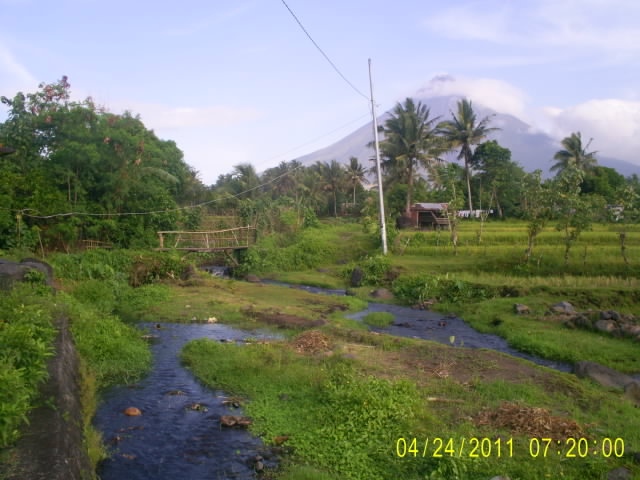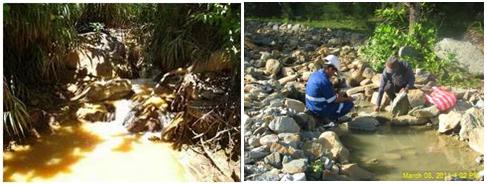PREAMBLE
Project financing, a method of funding in which the lender looks primarily to the revenues generated by a single project both as the source of repayment and as security for the exposure, plays an important role in financing development throughout the world.1 Project financiers may encounter social and environmental issues that are both complex and challenging, particularly with respect to projects in the emerging markets.
The Equator Principles Financial Institutions (EPFIs) have consequently adopted these Principles in order to ensure that the projects we finance are developed in a manner that is socially responsible and reflect sound environmental management practices. By doing so, negative impacts on project-affected ecosystems and communities should be avoided where possible, and if these impacts are unavoidable, they should be reduced, mitigated and/or compensated for appropriately. We believe that adoption of and adherence to these Principles offers significant benefits to ourselves, our borrowers and local stakeholders through our borrowers’ engagement with locally affected communities. We therefore recognise that our role as financiers affords us opportunities to promote responsible environmental stewardship and socially responsible development. As such, EPFIs will consider reviewing these Principles from time-to-time based on implementation experience, and in order to reflect ongoing learning and emerging good practice.
These Principles are intended to serve as a common baseline and framework for the implementation by each EPFI of its own internal social and environmental policies, procedures and standards related to its project financing activities. We will not provide loans to projects where the borrower will not or is unable to comply with our respective social and environmental policies and procedures that implement the Equator Principles.
SCOPE
The Principles apply to all new project financings globally with total project capital costs of US$10 million or more, and across all industry sectors. In addition, while the Principles are not intended to be applied retroactively, we will apply them to all project financings covering expansion or upgrade of an existing facility where changes in scale or scope may create significant environmental and/or social impacts, or significantly change the nature or degree of an existing impact.
The Principles also extend to project finance advisory activities. In these cases, EPFIs commit to make the client aware of the content, application and benefits of applying the Principles to the anticipated project, and request that the client communicate to the EPFI its intention to adhere to the requirements of the Principles when subsequently seeking financing.
STATEMENT OF PRINCIPLES
EPFIs will only provide loans to projects that conform to Principles 1-9 below:
Principle 1: Review and Categorisation
When a project is proposed for financing, the EPFI will, as part of its internal social and environmental review and due diligence, categorise such project based on the magnitude of its potential impacts and risks in accordance with the environmental and social screening criteria of the International Finance Corporation (IFC).
Principle 2: Social and Environmental Assessment
For each project assessed as being either Category A or Category B, the borrower has conducted a Social and Environmental Assessment (“Assessment”) process2 to address, as appropriate and to the EPFI’s satisfaction, the relevant social and environmental impacts and risks of the proposed project. The Assessment should also propose mitigation and management measures relevant and appropriate to the nature and scale of the proposed project.
Principle 3: Applicable Social and Environmental Standards
For projects located in non-OECD countries, and those located in OECD countries not designated as High-Income, as defined by the World Bank Development Indicators Database, the Assessment will refer to the then applicable IFC Performance Standards and the then applicable Industry Specific EHS Guidelines (“EHS Guidelines”). The Assessment will establish to a participating EPFI’s satisfaction the project's overall compliance with, or justified deviation from, the respective Performance Standards and EHS Guidelines.
The regulatory, permitting and public comment process requirements in High-Income OECD Countries, as defined by the World Bank Development Indicators Database, generally meet or exceed the requirements of the IFC Performance Standards (Exhibit III) and EHS Guidelines. Consequently, to avoid duplication and streamline EPFI's review of these projects, successful completion of an Assessment (or its equivalent) process under and in compliance with local or national law in High-Income OECD Countries is considered to be an acceptable substitute for the IFC Performance Standards, EHS Guidelines and further requirements as detailed in Principles 4, 5 and 6 below. For these projects, however, the EPFI still categorises and reviews the project in accordance with Principles 1 and 2 above.
The Assessment process in both cases should address compliance with relevant host country laws, regulations and permits that pertain to social and environmental matters.
Principle 4: Action Plan and Management System
For all Category A and Category B projects located in non-OECD countries, and those located in OECD countries not designated as High-Income, as defined by the World Bank Development Indicators Database, the borrower has prepared an Action Plan (AP)3 which addresses the relevant findings, and draws on the conclusions of the Assessment. The AP will describe and prioritise the actions needed to implement mitigation measures, corrective actions and monitoring measures necessary to manage the impacts and risks identified in the Assessment. Borrowers will build on, maintain or establish a Social and Environmental Management System that addresses the management of these impacts, risks, and corrective actions required to comply with applicable host country social and environmental laws and regulations, and requirements of the applicable Performance Standards and EHS Guidelines, as defined in the AP.
For projects located in High-Income OECD countries, EPFIs may require development of an Action Plan based on relevant permitting and regulatory requirements, and as defined by host-country law.
Principle 5: Consultation and Disclosure
For all Category A and, as appropriate, Category B projects located in non-OECD countries, and those located in OECD countries not designated as High-Income, as defined by the World Bank Development Indicators Database, the government, borrower or third party expert has consulted with project affected communities in a structured and culturally appropriate manner.4 For projects with significant adverse impacts on affected communities, the process will ensure their free, prior and informed consultation and facilitate their informed participation as a means to establish, to the satisfaction of the EPFI, whether a project has adequately incorporated affected communities’ concerns.5
In order to accomplish this, the Assessment documentation and AP, or non-technical summaries thereof, will be made available to the public by the borrower for a reasonable minimum period in the relevant local language and in a culturally appropriate manner. The borrower will take account of and document the process and results of the consultation, including any actions agreed resulting from the consultation. For projects with adverse social or environmental impacts, disclosure should occur early in the Assessment process and in any event before the project construction commences, and on an ongoing basis.
Principle 6: Grievance Mechanism
For all Category A and, as appropriate, Category B projects located in non-OECD countries, and those located in OECD countries not designated as High-Income, as defined by the World Bank Development Indicators Database, to ensure that consultation, disclosure and community engagement continues throughout construction and operation of the project, the borrower will, scaled to the risks and adverse impacts of the project, establish a grievance mechanism as part of the management system. This will allow the borrower to receive and facilitate resolution of concerns and grievances about the project’s social and environmental performance raised by individuals or groups from among project-affected communities. The borrower will inform the affected communities about the mechanism in the course of its community engagement process and ensure that the mechanism addresses concerns promptly and transparently, in a culturally appropriate manner, and is readily accessible to all segments of the affected communities.
Principle 7: Independent Review
For all Category A projects and, as appropriate, for Category B projects, an independent social or environmental expert not directly associated with the borrower will review the Assessment, AP and consultation process documentation in order to assist EPFI's due diligence, and assess Equator Principles compliance.
Principle 8: Covenants
An important strength of the Principles is the incorporation of covenants linked to compliance. For Category A and B projects, the borrower will covenant in financing documentation:
a) to comply with all relevant host country social and environmental laws, regulations and permits in all material respects;
b) to comply with the AP (where applicable) during the construction and operation of the project in all material respects;
c) to provide periodic reports in a format agreed with EPFIs (with the frequency of these reports proportionate to the severity of impacts, or as required by law, but not less than annually), prepared by in-house staff or third party experts, that i) document compliance with the AP (where applicable), and ii) provide representation of compliance with relevant local, state and host country social and environmental laws, regulations and permits; and
d) to decommission the facilities, where applicable and appropriate, in accordance with an agreed decommissioning plan.
Where a borrower is not in compliance with its social and environmental covenants, EPFIs will work with the borrower to bring it back into compliance to the extent feasible, and if the borrower fails to re-establish compliance within an agreed grace period, EPFIs reserve the right to exercise remedies, as they consider appropriate.
Principle 9: Independent Monitoring and Reporting
To ensure ongoing monitoring and reporting over the life of the loan, EPFIs will, for all Category A projects, and as appropriate, for Category B projects, require appointment of an independent environmental and/or social expert, or require that the borrower retain qualified and experienced external experts to verify its monitoring information which would be shared with EPFIs.
Principle 10: EPFI Reporting
Each EPFI adopting the Equator Principles commits to report publicly at least annually about its Equator Principles implementation processes and experience, taking into account appropriate confidentiality considerations.6
DISCLAIMER
The adopting EPFIs view these Principles as a financial industry benchmark for developing individual, internal social and environmental policies, procedures and practices. As with all internal policies, these Principles do not create any rights in, or liability to, any person, public or private. Institutions are adopting and implementing these Principles voluntarily and independently, without reliance on or recourse to IFC or the World Bank.
1 Project finance is “a method of funding in which the lender looks primarily to the revenues generated by a single project, both as the source of repayment and as security for the exposure. This type of financing is usually for large, complex and expensive installations that might include, for example, power plants, chemical processing plants, mines, transportation infrastructure, environment, and telecommunications infrastructure. Project finance may take the form of financing of the construction of a new capital installation, or refinancing of an existing installation, with or without improvements. In such transactions, the lender is usually paid solely or almost exclusively out of the money generated by the contracts for the facility’s output, such as the electricity sold by a power plant. The borrower is usually an SPE (Special Purpose Entity) that is not permitted to perform any function other than developing, owning, and operating the installation. The consequence is that repayment depends primarily on the project’s cash flow and on the collateral value of the project’s assets.” Source: Basel Committee on Banking Supervision, International Convergence of Capital Measurement and Capital Standards ("Basel II"), November 2005. http://www.bis.org/publ/bcbs118.pdf.
2 Social and Environmental Assessment is a process that determines the social and environmental impacts and risks (including labour, health, and safety) of a proposed project in its area of influence. For the purposes of Equator Principles compliance, this will be an adequate, accurate and objective evaluation and presentation of the issues, whether prepared by the borrower, consultants or external experts. Depending on the nature and scale of the project, the assessment document may comprise a full-scale social and environmental impact assessment, a limited or focused environmental or social assessment (e.g. audit), or straight-forward application of environmental siting, pollution standards, design criteria, or construction standards. One or more specialised studies may also need to be undertaken.
3 The Action Plan may range from a brief description of routine mitigation measures to a series of documents (e.g., resettlement action plan, indigenous peoples plan, emergency preparedness and response plan, decommissioning plan, etc). The level of detail and complexity of the Action Plan and the priority of the identified measures and actions will be commensurate with the project’s potential impacts and risks. Consistent with Performance Standard 1, the internal Social and Environmental Management System will incorporate the following elements: (i) Social and Environmental Assessment; (ii) management program; (iii) organisational capacity; (iv) training; (v) community engagement; (vi) monitoring; and (vii) reporting.
4 Affected communities are communities of the local population within the project’s area of influence who are likely to be adversely affected by the project. Where such consultation needs to be undertaken in a structured manner, EPFIs may require the preparation of a Public Consultation and Disclosure Plan (PCDP).
5 Consultation should be “free” (free of external manipulation, interference or coercion, and intimidation), “prior” (timely disclosure of information) and “informed” (relevant, understandable and accessible information), and apply to the entire project process and not to the early stages of the project alone. The borrower will tailor its consultation process to the language preferences of the affected communities, their decision-making processes, and the needs of disadvantaged or vulnerable groups. Consultation with Indigenous Peoples must conform to specific and detailed requirements as found in Performance Standard 7. Furthermore, the special rights of Indigenous Peoples as recognised by host-country legislation will need to be addressed.
6 Such reporting should at a minimum include the number of transactions screened by each EPFI, including the categorisation accorded to transactions (and may include a breakdown by sector or region), and information regarding implementation.
http://www.equator-principles.com/































































































































